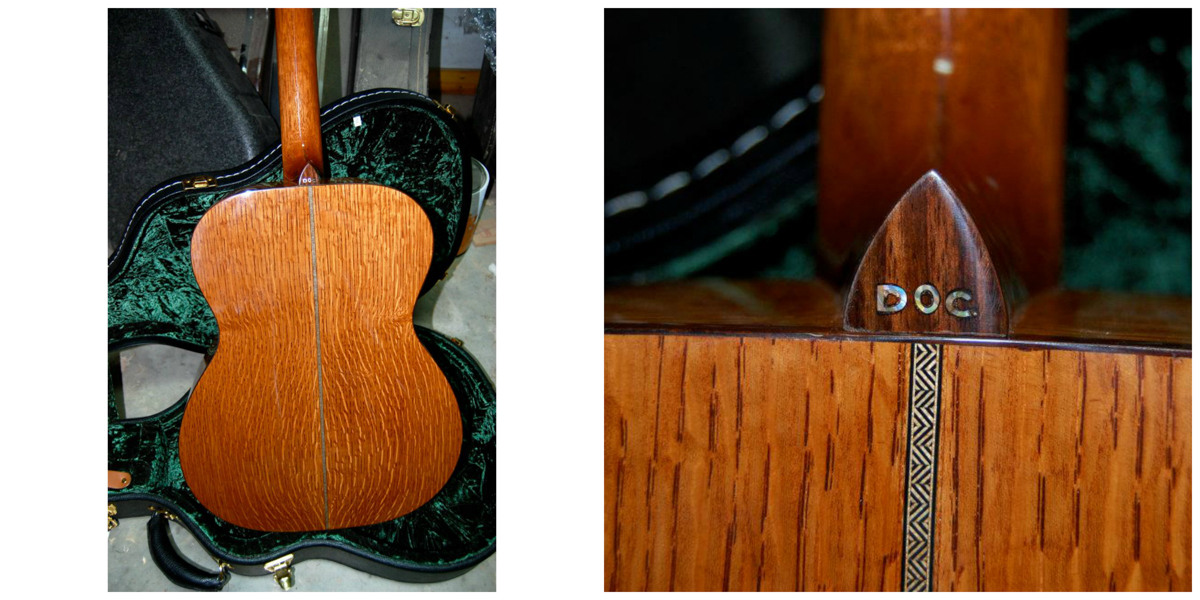“Instrument Interview” posts are a chance to sit down with the instruments of traditional, country, bluegrass, and roots music – from different types of instruments to specific ones related to artists, luthiers, and songwriters – and learn more about them. Ten questions are posed, and the instruments answer! Today we talk with a guitar built for Doc Watson.
Tell us a little bit about yourself.
Hi! I am a handcrafted acoustic guitar based on a Martin 000 pattern. I was made by Jayne Henderson, the daughter of prominent luthier Wayne Henderson – in my opinion, she is the coolest Henderson! Being a 000 means that I am a smaller guitar, with thinner sides and a smaller body shape than the typical bluegrass Dreadnought guitar you see all the big country stars playing. My small stature doesn’t stop me in terms of volume and playability though!
I am made from white oak, which I know isn’t the typical material one would think of when it comes to guitars. However, at the time, my builder had just graduated from Vermont Law School with a degree in environmental law and policy, and therefore she wanted to try some local materials as she didn’t want to use any woods that were extinct or too hard to come by.
I was made for the incredible musician Doc Watson upon his request. He passed away about a week before I was finished, but that has not stopped me from spreading my voice loud and proud among other musicians – in fact, it has actually lead to some awesome opportunities where I have been played by all sorts of talented folks!
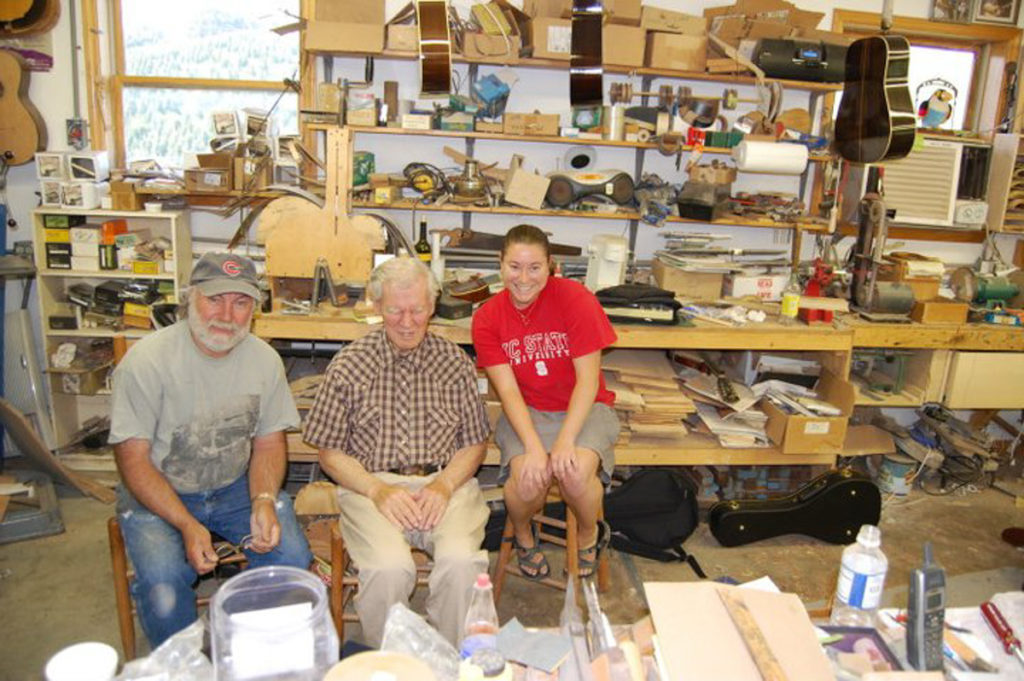
Why is oak such a strange wood to make a guitar from?
Well, while not many builders use it for a tone wood these days, it actually isn’t that strange historically. Martin, one of the best guitar manufacturers out there in my opinion, made parlor guitars from oak around the turn of the 20th century and into the 1920s and 1930s.
Jayne, my builder, found the board I am made from at a local lumber yard and chose it primarily because the board was the first one she had ever seen where she knew it was quarter-sawn, a term that refers to the grain of a tree running straight vertically for the length of the board. Boards that are quarter-sawn are the best for guitar material because they are usually the most stable pieces in terms of cracking and moving. Quarter-sawn boards are also best at allowing vibrations from plucked strings to run fastest through the board and then transmitting those vibrations into sound waves. She bought that board and took it to Virginia where her dad helped her cut it into a guitar set. The thinly sliced back and side pieces rang out loud and bright when Jayne and her dad tapped on them so they knew the pieces would make a great guitar.
What is the best part about being made from a material not typically used for guitars?
The coolest thing about being made from a piece of white oak is that it is a sustainable material that is easily available for building. A lot of historically used materials – such as Brazilian rosewood and Honduran mahogany – are becoming endangered or have even gone extinct so protecting those resources rather than using them is more important than ever. Even though there are currently some regulations monitoring the use, those types of wood won’t be around forever at the rate they are being harvested or destroyed in their countries.
I am also very proud that when you tap on a plank of oak, its tone is similar to that of Brazilian rosewood. What’s great is that oak comes from right here, in our own backyards, and it is prevalent enough that if you cut a few, or better yet, harvest a naturally felled tree, it won’t threaten the entire species or the subsequent species that rely on that tree for survival.
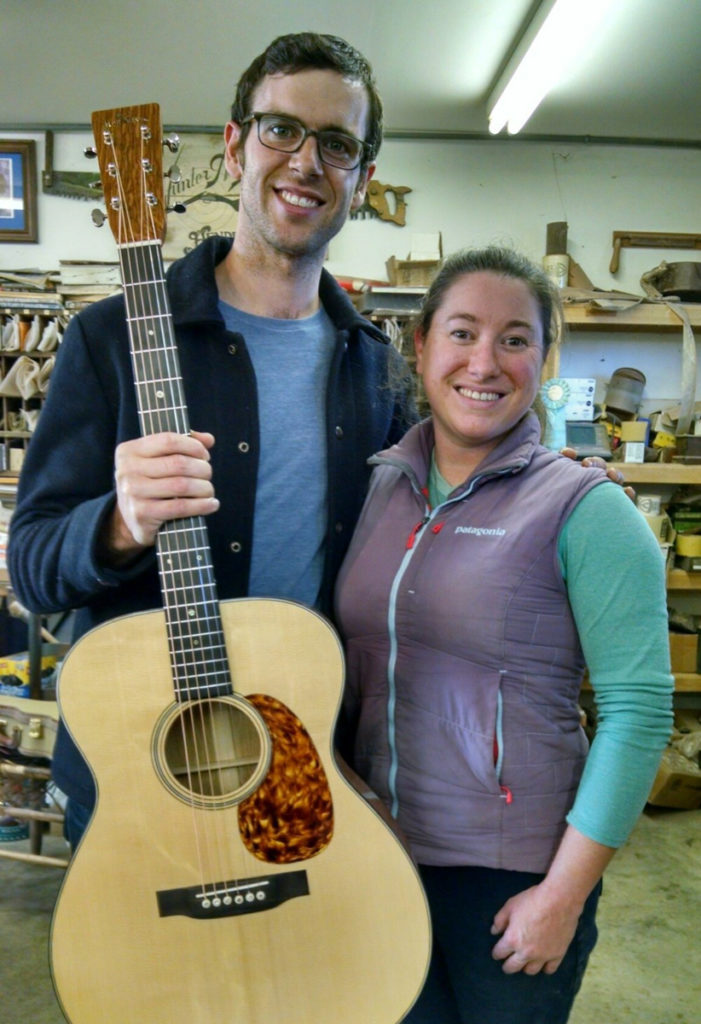
You said you were made for Doc Watson. Who is that?
Doc Watson is a legendary musician known for his picking style and for pioneering new “licks” on old songs – licks that countless musicians following his footsteps strive to emulate, including Wayne Henderson. Doc was blind, which he once told Jayne was why he became a musician in the first place as it provided a means to express himself as well as carry a successful profession without the need to see. Jayne knew Doc Watson for her entire life because he had been friends with her dad through playing music together. Doc also has a few of Wayne’s instruments, one of which he proudly played during his last performance at Merlefest a few years back.
How did he find out about Jayne’s guitars?
The last years of Doc’s life, when he wasn’t traveling around playing as much, he would visit Wayne’s shop most Sundays. He would sit for hours and tell Jayne stories, like how he met his wife Rosalie or all the pets he has considered friends in his life, while petting her dog Harper who laid her head on his feet, oblivious to his celebrity status. Whenever Jayne finished a new guitar near one of those precious Sundays, Doc would always play it and sing a song or two.
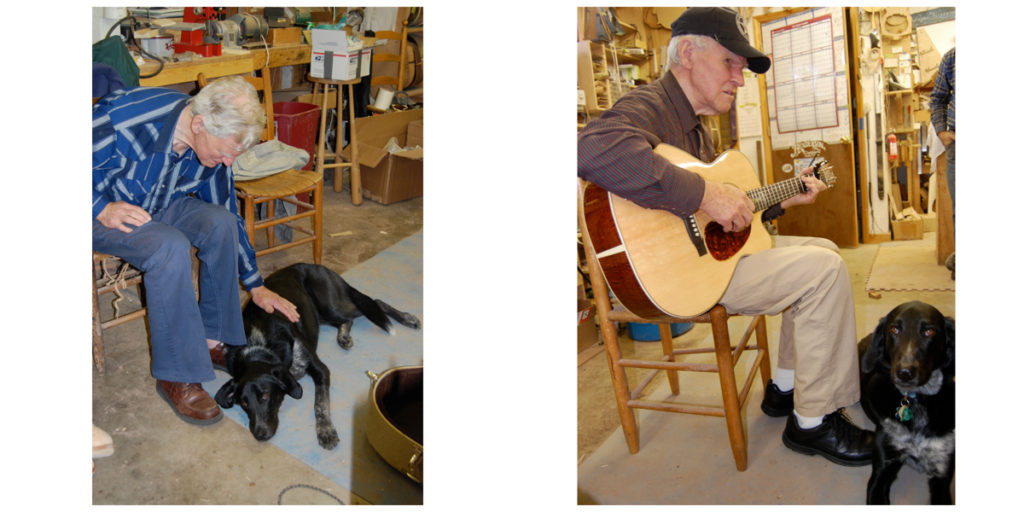
And then how did you come about?
As Jayne began building, she would show Doc her new guitars. He was so kind and generous with praise for each one, even though he claimed he would be honest with his critiques. One day Jayne asked if he would like her to build him one, and he said he would love that – soon enough I was in the works. I am a simple guitar, with minimal adornment, the only flashy thing being my brass encircled fret markers which reminded Jayne of the snaps on Doc’s plaid shirts.
How did Doc feel about oak being used for his guitar?
Jayne told Doc that she wanted to use a sustainable material for his guitar. Because she had just finished her degree from one of the top environmental law programs in the country, she thought it was important to include the principles she learned in her building. She asked if the oak she had found would be OK to use and showed him the boards so he could hear them ring. He told her, “Honey, that wood sounds great. Anything you want to make for me, I am going to love it.”
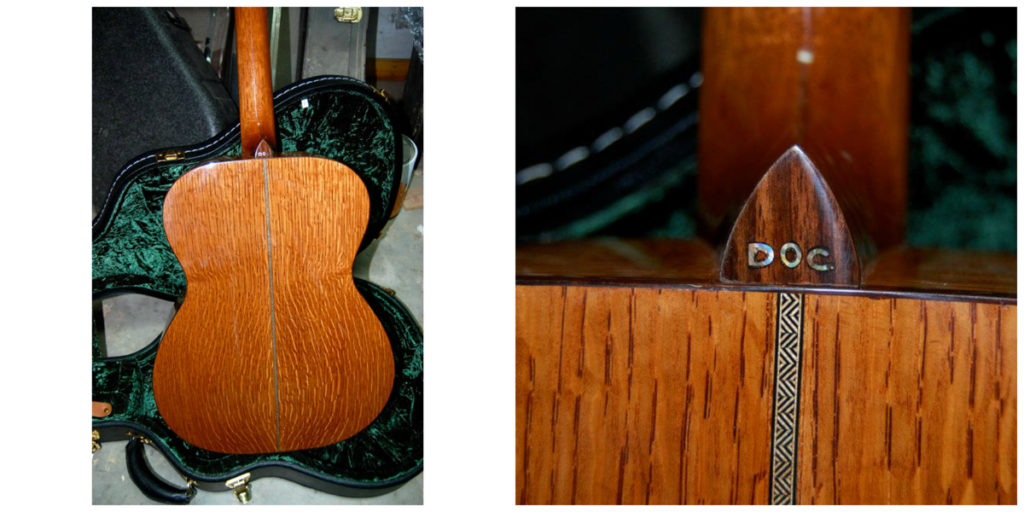
So what happened next?
Well, as I was getting my top braces shaved down, the shop phone rang. Someone told Wayne that Doc had passed away. Jayne decided she would never be able to sell this guitar, one that she had made for her friend, so she set about making the neck comfortable for her hand instead. Once, a few months before, while testing a guitar she had just strung up, Doc told her, “You need to keep this guitar and learn to play it as well as your dad. Learn from him everything you can.” Sometimes I think I was meant to be Jayne’s guitar all along, that Doc wanted her to have a guitar. She didn’t have a full-sized one, just the tiny one her dad made her when she was eight years old, built with such precious materials she was almost scared to play it. She shaped my neck to fit her own hand and now practices on me as often as she can.
Do you get to go anywhere else?
Jayne loves to share me with her friends, because she wants everyone to have a great guitar if they need one. When she isn’t practicing her limited skills on me, her dad plays me on the PBS show Song of the Mountains and for Doc tributes at Merlefest. I have also gotten to sit with Zac Brown of The Zac Brown Band as he did an interview for CBS Sunday Morning, and I’ve traveled to Washington, DC for the first leg of Steve Martin’s musical Bright Star.
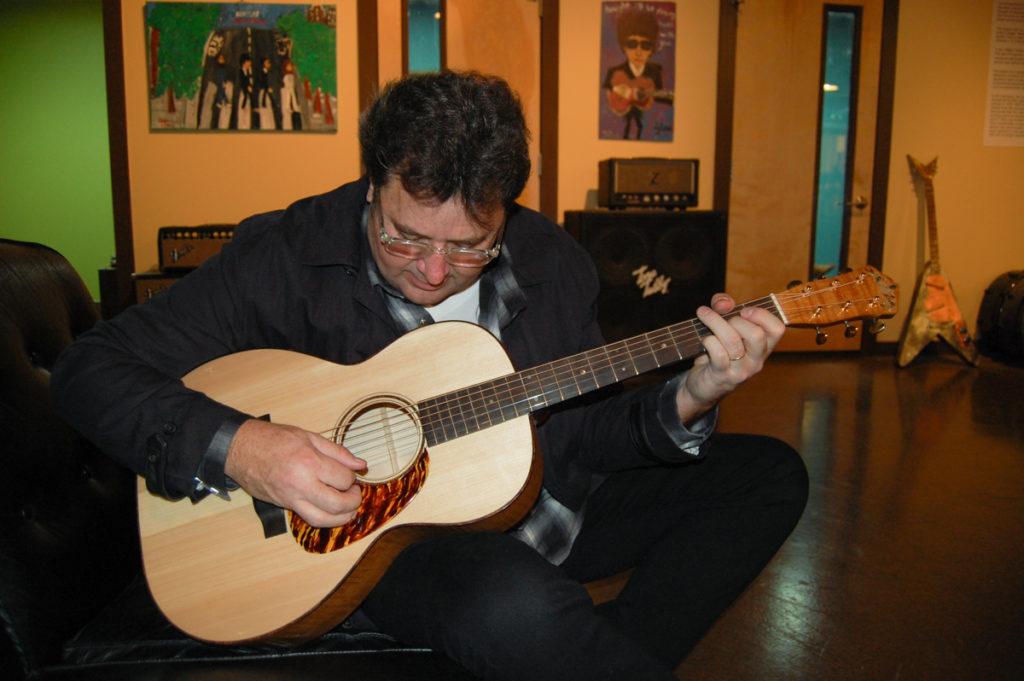
Is there anything you’d like to add about yourself?
I want to be sure everyone knows that just because you may come from sustainable, even humble, beginnings doesn’t mean you will shine any less than that flashy Brazilian rosewood adorning the backs of your counterparts!


